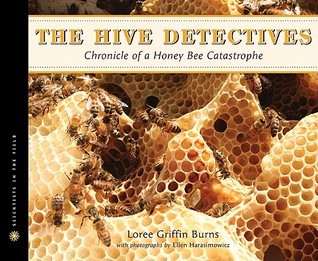What do you think?
Rate this book


66 pages, Hardcover
First published May 3, 2010
Summary: This book is all about Honey bees. It follows the events of what would happen without them and the mystery of why they are disappearing. It shows just how much humans would be affected if those little bees were no longer around.
Evaluation: This book was such an informative book. How it described what would happen to humans if those honey bees disappeared. It was eye opening, and would be for students who had no idea just how important those bees are. The pictures of bees on the combs were so amazing. The book had such close up pictures of the bees.
Teaching Ideas: This book would be extremely beneficial for students who are learning about ecosystems, especially fourth graders. They can read this book on their own. It would be good to give them a scenario about what would happen if something disappeared and they would have to research and figure out a cause and effect of that scenario. One of the scenarios could be about bees. The students would have to look through this book and figure out what would happen if bees went extinct. And how could we as humans help to change it,